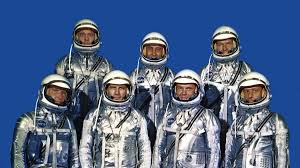In 1959, the United States embarked on an ambitious and historic journey into space with the selection of its first group of astronauts, known as the "Mercury Seven." These seven courageous individuals would become the face of America's fledgling space program and pave the way for the nation's future achievements in space exploration. The selection of America's first astronauts in 1959 marked a significant milestone in the Space Race and captured the imagination of the American public, as the nation set its sights on reaching new frontiers beyond Earth's atmosphere. The Mercury Seven astronauts were chosen from a pool of military test pilots who possessed the skills, experience, and courage needed to venture into the unknown realm of space. The seven men selected for this historic mission were Scott Carpenter, Gordon Cooper, John Glenn, Gus Grissom, Wally Schirra, Alan Shepard, and Deke Slayton. These astronauts were hailed as heroes and pioneers, as they prepared to embark on a series of groundbreaking missions that would test the limits of human endurance and technology. The selection of America's first astronauts in 1959 was a carefully orchestrated process that involved rigorous testing, evaluation, and training to ensure that the chosen candidates were physically and mentally prepared for the challenges of spaceflight. The Mercury Seven underwent a battery of medical examinations, psychological assessments, and physical fitness tests to determine their suitability for the demanding and dangerous mission ahead. These tests were designed to assess their ability to withstand the physical stresses of space travel, as well as their capacity to remain calm, focused, and resilient in the face of adversity. The Mercury Seven astronauts were more than just skilled pilots and engineers; they were also charismatic and media-savvy individuals who captured the attention and admiration of the American public. The astronauts became instant celebrities, appearing on magazine covers, television programs, and newspaper headlines as they captured the nation's imagination with their daring exploits and pioneering spirit. The Mercury Seven were seen as symbols of American ingenuity, bravery, and determination, embodying the nation's aspirations to lead the world in space exploration. In 1961, Alan Shepard became the first American astronaut to journey into space aboard the Freedom 7 spacecraft, making a suborbital flight that lasted just over 15 minutes. Shepard's historic flight marked a significant achievement for the United States in the Space Race and paved the way for future manned missions into orbit and beyond. John Glenn followed in Shepard's footsteps in 1962, becoming the first American to orbit the Earth aboard the Friendship 7 spacecraft, further solidifying America's position as a leading spacefaring nation. The Mercury Seven astronauts played a pivotal role in shaping the trajectory of America's space program and inspiring future generations of astronauts, engineers, and scientists to push the boundaries of human exploration. Their courage, dedication, and pioneering spirit laid the foundation for the Apollo missions to the Moon, the Space Shuttle program, and the International Space Station, as America continued to reach for the stars and expand its presence in the cosmos.
1959 America’s First Astronauts
